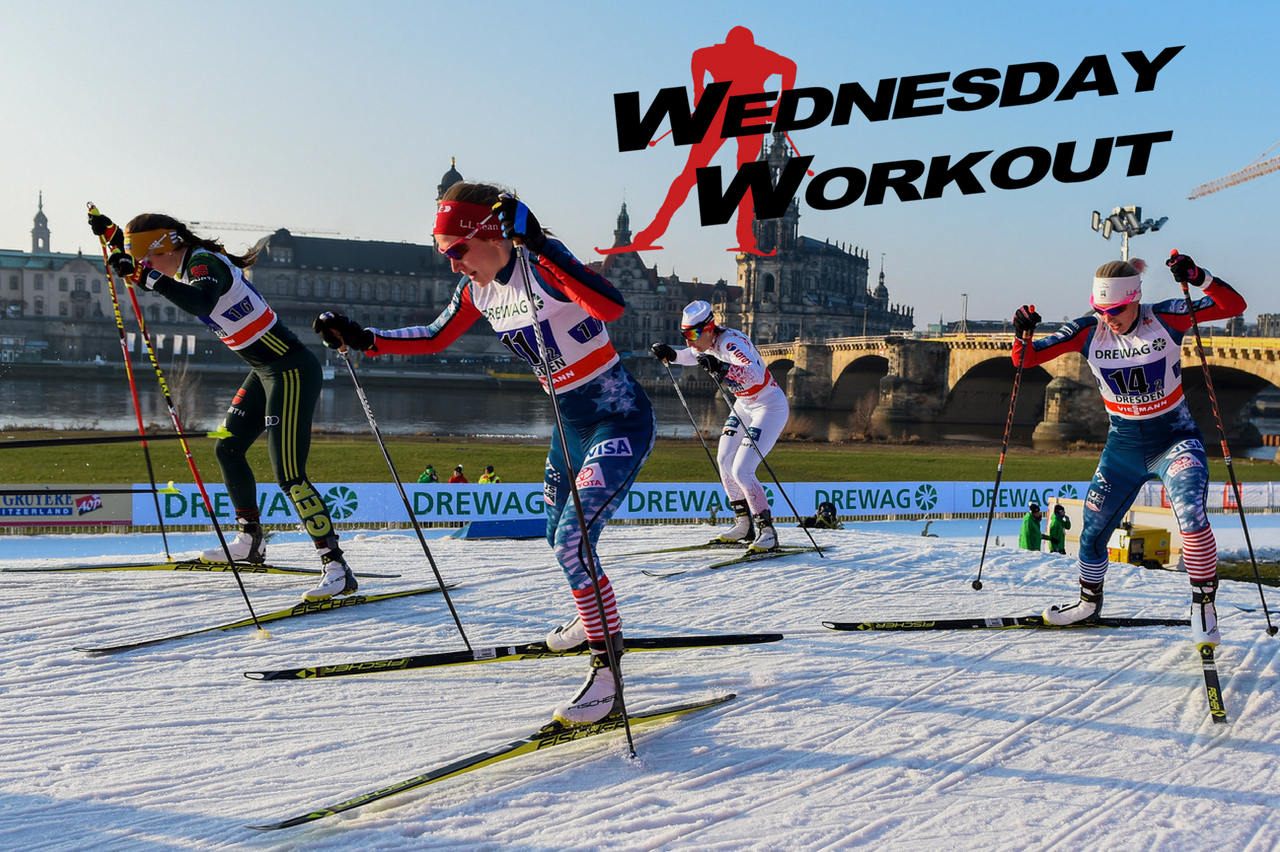

The following Wednesday Workout was written by Dr. Øyvind B. Sandbakk, the managing director at the Centre for Elite Sports Research at the Norwegian University of Science and Technology (NTNU) in Trondheim, Norway. (He’ll also be featured in an upcoming Nordic Nation podcast.)
Beyond his work at NTNU, Sandbakk is the head of research and development at the Norwegian Olympic Sports Center (Olympiatoppen). At 37, he has established himself as one of the premier researchers studying how to optimize performance for cross-country skiers. Even a simple online search is a treasure trove of relevant Sabdbakk research. You can follow him on Twitter @OyvindSandbakk.
The following workouts focus on building sprint capacity:
Sprint training
Short sprint sessions are important to develop the neuromuscular system specifically and the technique at high speeds. In order to assure that technique development is optimal, I normally start sessions with sprints at 90 and 95% of maximal speed, before the last part of the sessions are done with close 100% effort. For athletes struggling with the technique, the entire session is sometimes done with 95% of maximal speed in order to facilitate good technique. Most of such sessions should be done using specific skiing techniques. One example:
- 5 x 15-second strides with gradually higher speeds, followed by 4 x 10 seconds in heavy terrain (90-95-100-100% of max speed) and 4 x 15 seconds in easy terrain/spurt (90-95-100-100% of max speed). 2-minute recovery between sprints and 5 minutes between series.
Sprint intervals
Sprint interval sessions should develop specific areas or weaknesses. These sessions are done technique-specific with good technique and quality maintained throughout the entire session. I personally like that they are target terrain where races are often decided such as simulations of attacks or final sprints. The cost of such sessions are high, so they should not be done too often, but regularly. Some examples:
- 2-3 series of 6 x 20-second maximal sprints with diagonal or skating in moderate or heavy terrain with 2 to 3 min recovery, and 5 min between series
- 2-3 series of 6 x 30-second double poling or skating in easy terrain, with 1-2 minutes recovery, and 5 min between series
Note: The terrain decides how long the duration of work and recovery periods can be, and easier terrain and when the upper body is more loaded allows longer work durations and shorter recovery
Short intervals
Short interval sessions allow the aerobic system to be stimulated at high skiing speeds, with additional stimulus at the anaerobic system without totally fatiguing the athlete. Such sessions should mainly be done using specific technique, and personally, I like to use modes and terrains that are of particular importance at the end of races, such as attacks in uphill terrain or the final sprint. It is also important that good technique and high speed is maintained throughout the entire session. Some practical examples:
- 40-45-second work durations, with 15-20 seconds of active recovery at an easy pace, performed over 5-8 minute intervals. Depending on the age and level of the athlete, 3-5 such intervals should be done.
- 20 seconds slow — 20 seconds hard – 20 seconds close to maximal – 20 seconds slow, etc. over 4-5 minutes. Depending on the age and level of the athlete, 4-6 such intervals should be done.
Jason Albert
Jason lives in Bend, Ore., and can often be seen chasing his two boys around town. He’s a self-proclaimed audio geek. That all started back in the early 1990s when he convinced a naive public radio editor he should report a story from Alaska’s, Ruth Gorge. Now, Jason’s common companion is his field-recording gear.



